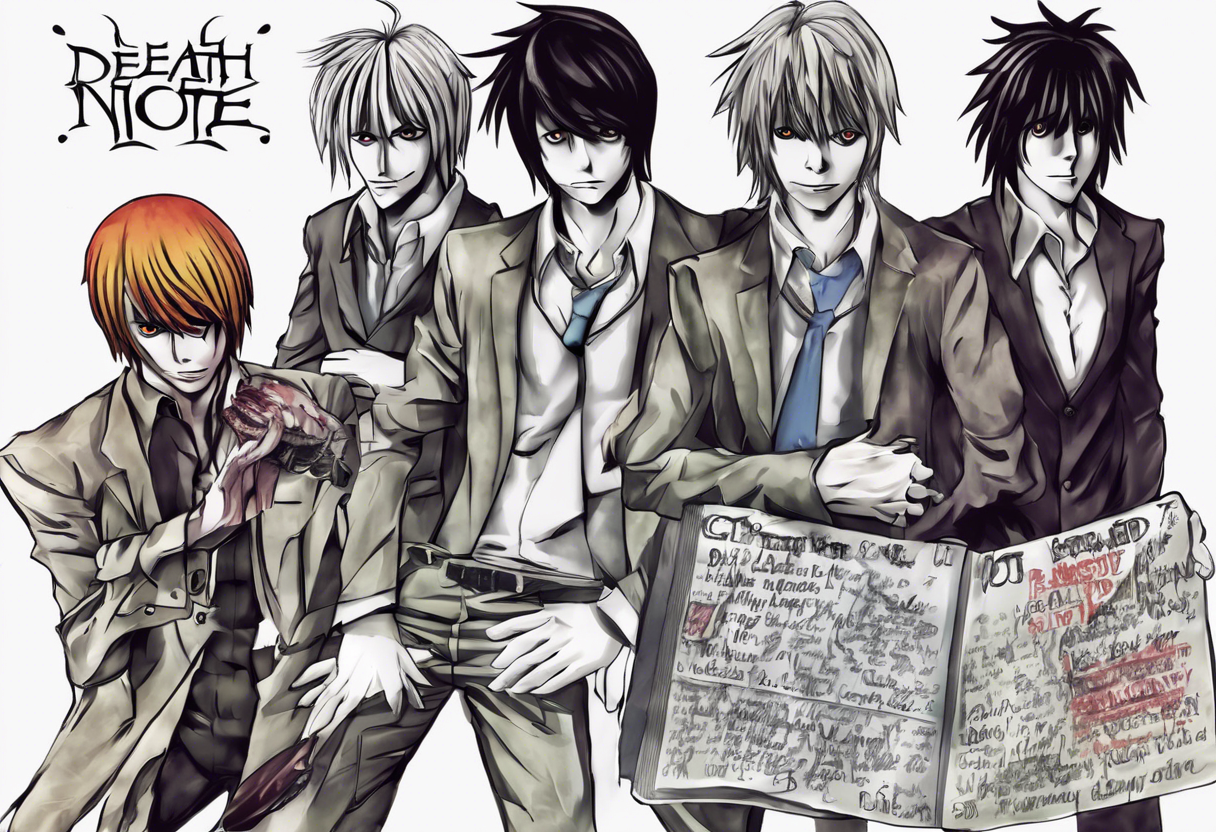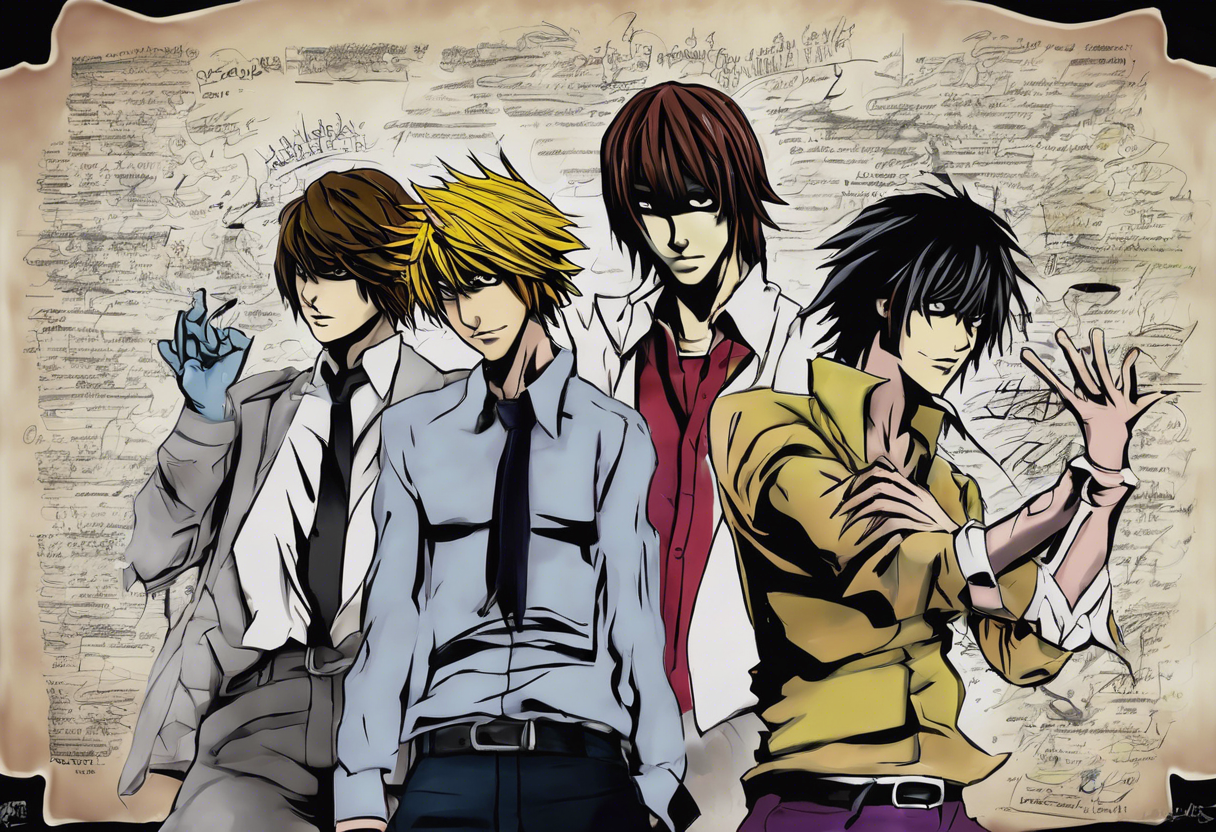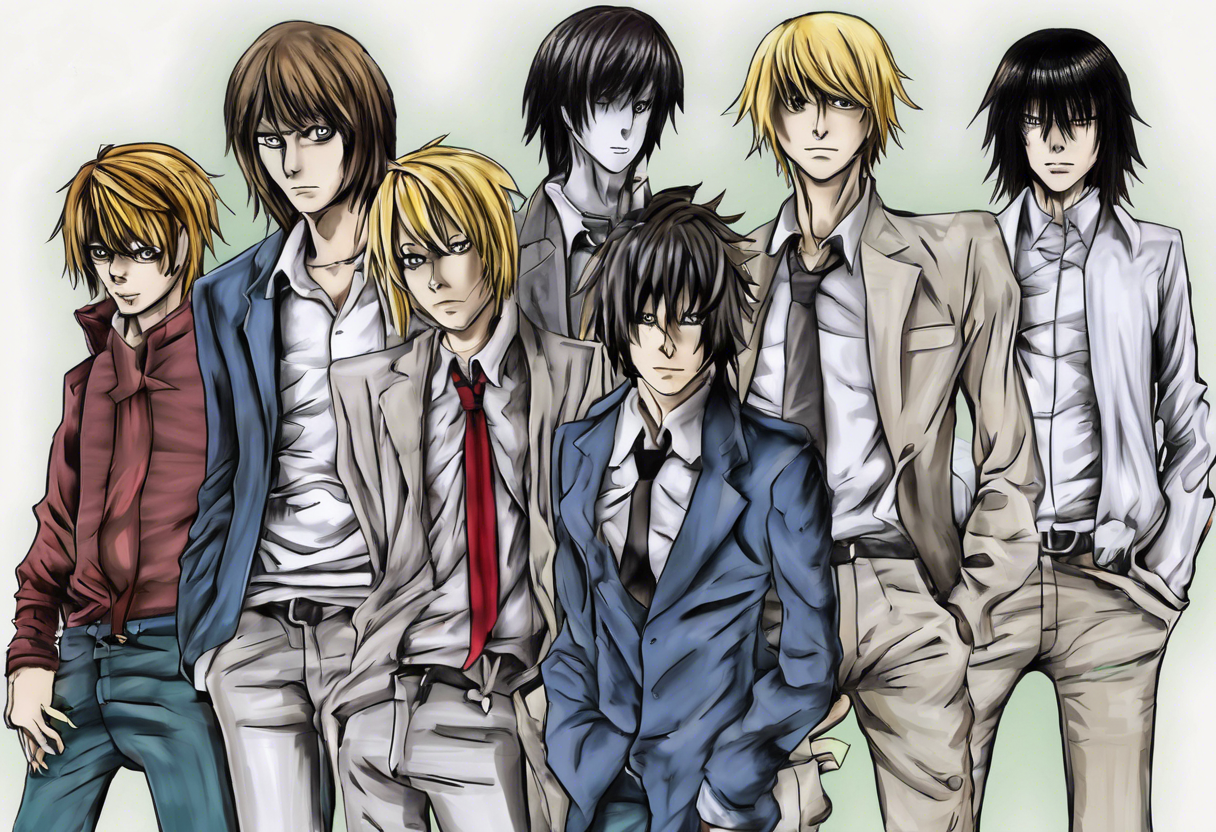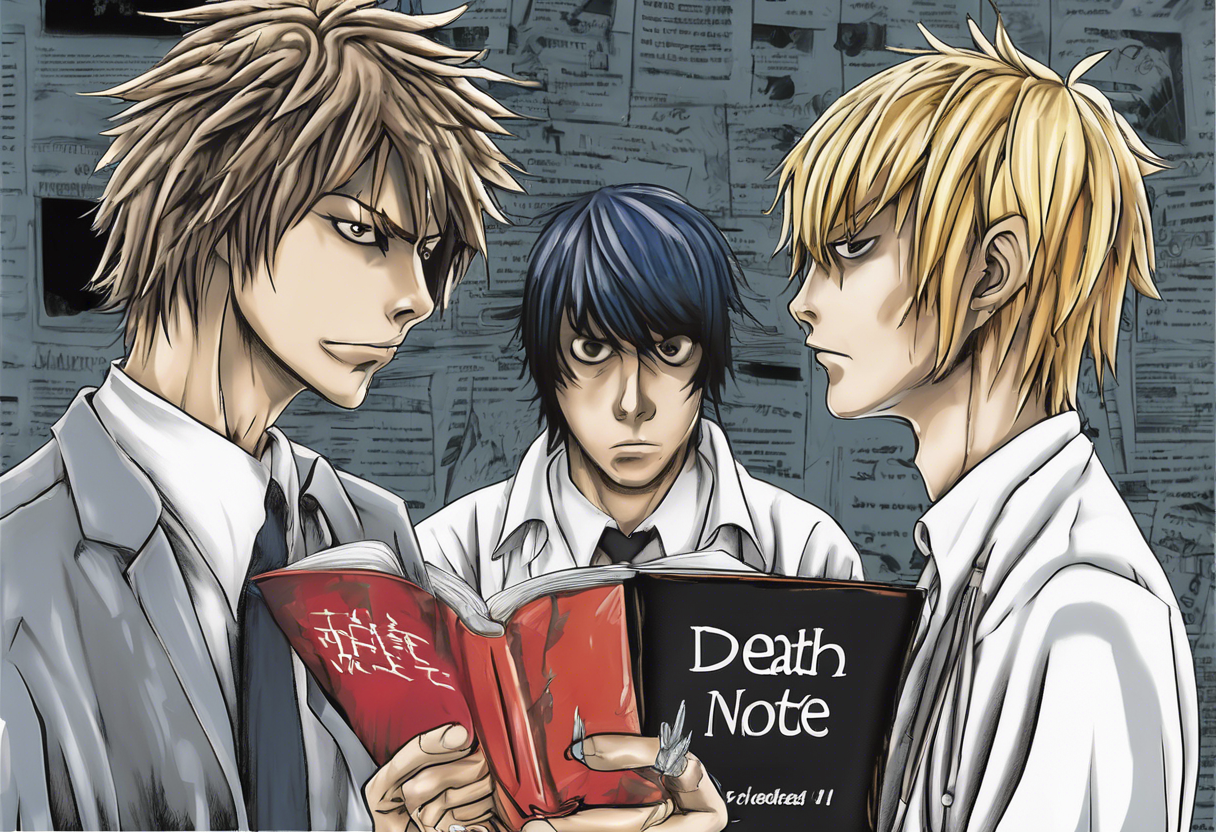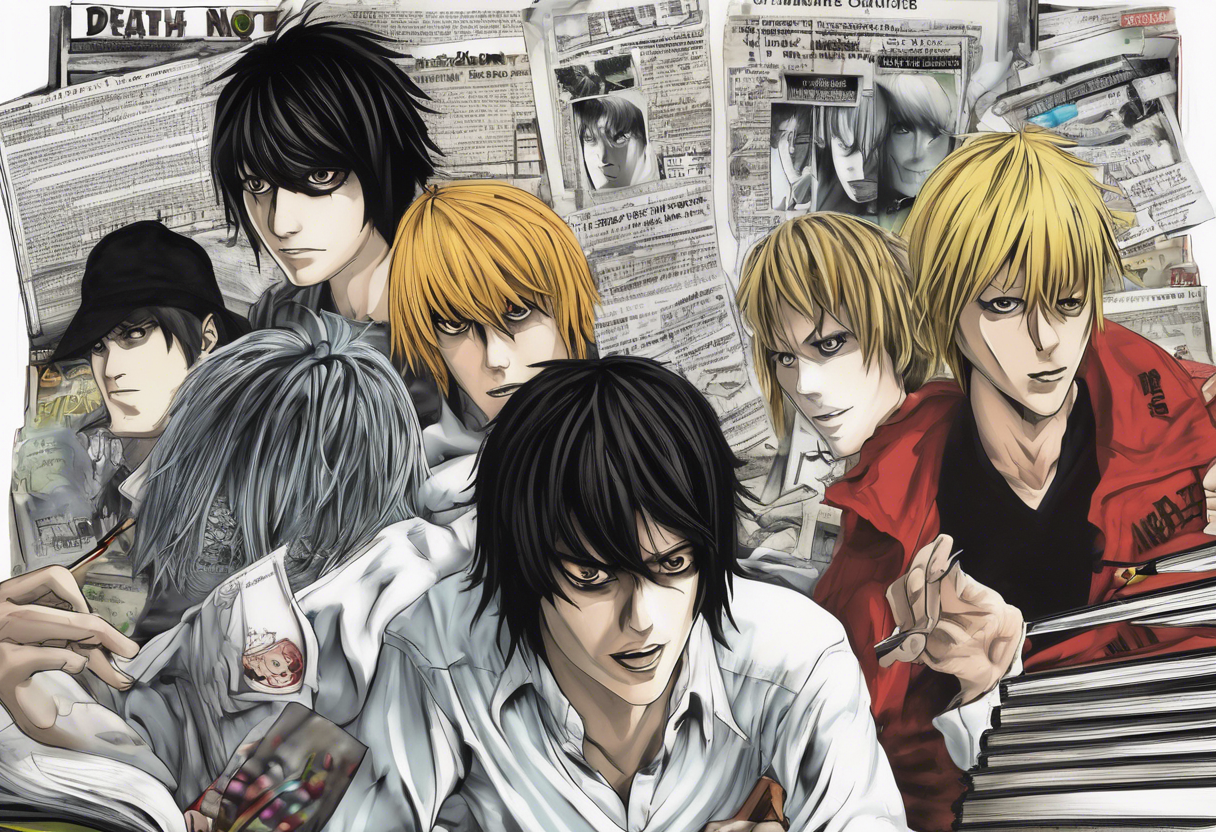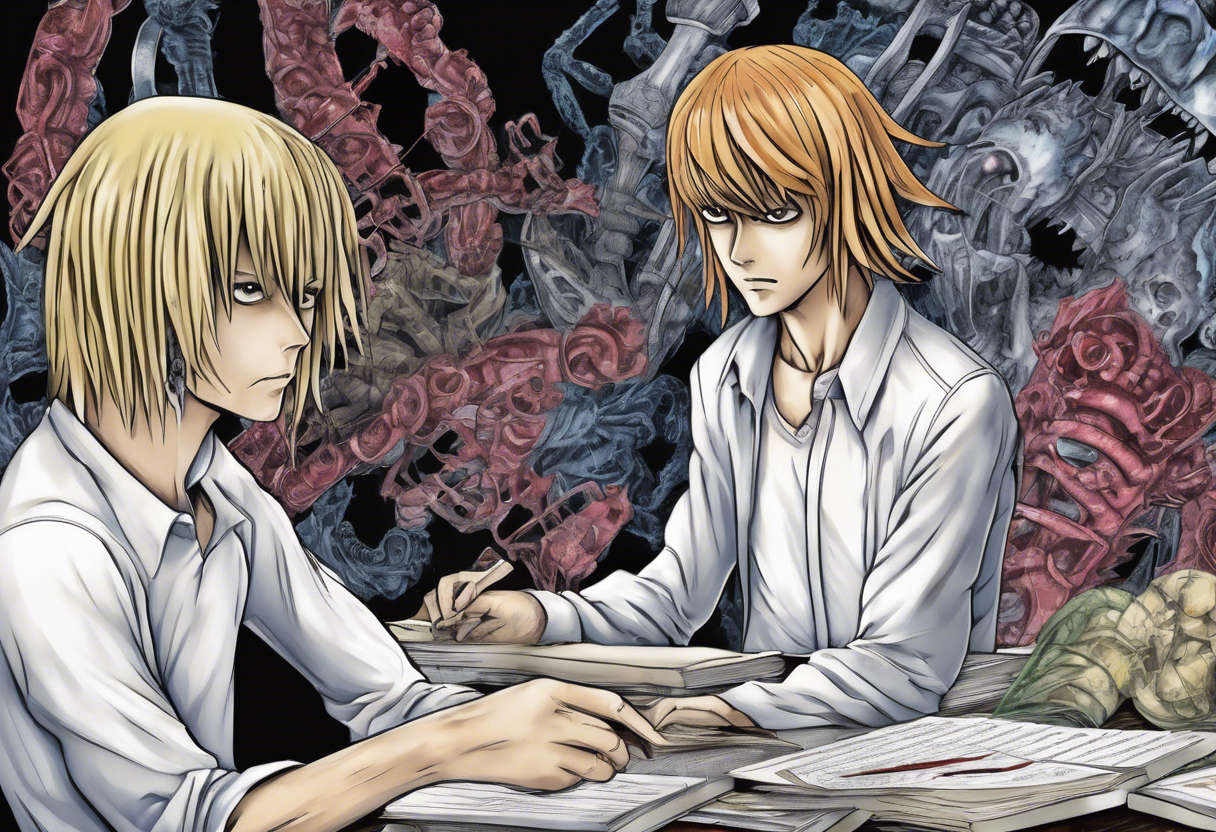Contents
Introduction
"Tactics" is the fifth episode of the anime series Death Note, a psychological thriller that has captivated audiences worldwide with its intricate plot, complex characters, and profound themes. The Death Note series, based on the manga by Tsugumi Ohba and illustrated by Takeshi Obata, was adapted into an anime by Madhouse and directed by Tetsurō Araki. It premiered on Nippon TV on October 4, 2006, and concluded on June 27, 2007, with a total of 37 episodes.
The production of Death Note involved a collaborative effort between several key creative figures. Tsugumi Ohba handled the writing, while Takeshi Obata was responsible for the artwork. The anime adaptation was produced by Madhouse, Nippon Television, Shueisha, D.N. Dream Partners, and VAP. What sets Death Note apart, including the episode "Tactics," is its meticulous storytelling, intelligent plot twists, and deep exploration of moral and philosophical themes.
Plot Summary
In "Tactics," the narrative takes a significant turn as Light Yagami, the genius high school student who possesses the Death Note, further solidifies his transformation into a ruthless villain. The episode begins with Light manipulating Raye Penber, an FBI agent tasked with investigating the mysterious killer known as Kira. Light uses his cunning and the Death Note’s rules to trick Raye into writing the names of his FBI colleagues, leading to their deaths. This act marks a pivotal moment in the series, as Light crosses the line from killing criminals to murdering innocent law enforcement officers, cementing his status as a sociopathic murderer [1][5].
The episode also introduces Misora, Raye’s fiancée, who is also involved with the FBI but is kept out of the Kira investigation by Raye. Despite this, she becomes a potential wild card in the pursuit of Kira, as she continues to follow clues and track down leads.
Meanwhile, L, the eccentric genius detective, continues his investigation into Kira’s identity. L enlists the help of a small group of trusted officers, including Light’s father, Soichiro Yagami, to help uncover the truth. The episode sets the stage for the intellectual battle between Light and L, with Light sending L cryptic messages and red herrings to mislead him [1][5].
Themes and Symbolism
"Tactics" and the broader Death Note series delve into several profound themes that resonate deeply with audiences. One of the central themes is the morality of justice and the consequences of playing god. Light’s initial intention to create a world free from crime by killing criminals using the Death Note gradually evolves into a more sinister desire for power and control. This transformation raises questions about the nature of justice, the value of human life, and the dangers of unchecked power [2][4].
Another significant theme is the cat-and-mouse game between Light and L, symbolizing the eternal conflict between good and evil, or in this case, between two geniuses with opposing moral compasses. L’s character represents a more traditional form of justice, relying on evidence and deduction, while Light embodies a twisted form of justice that disregards the law and human ethics.
The Death Note itself is a symbolic element, representing the power to control life and death. The rules and limitations of the Death Note serve as a metaphor for the constraints and consequences of such power, highlighting the complexities and moral dilemmas associated with it [4].
Cultural Impact
The Death Note series, including the episode "Tactics," has had a significant cultural impact since its release. The anime was widely acclaimed for its suspenseful storytelling, intelligent characters, and moral depth. It was one of the first Japanese anime properties to be made legally available in the United States for download while it was still airing in Japan, marking a significant milestone in the distribution of anime globally [4].
The series has influenced popular culture, with references in various forms of media, including other anime, manga, and even live-action films. The character of L, in particular, has become iconic for his eccentric behavior and genius-level intellect, inspiring fan art, cosplay, and fan fiction.
Critical Reception
"Tactics" and the Death Note series have received widespread critical acclaim. Critics praised the series for its engaging storyline, well-developed characters, and the moral complexity it brings to the table. The animation and music were also commended for their quality and appropriateness to the narrative.
However, some critics noted that the series’ heavy reliance on plot twists and the introduction of new rules for the Death Note could sometimes feel like backwards writing, where the rules are introduced after the event has occurred. Despite this, the overall consensus is that the series is gripping and thought-provoking, making it one of the great anime series of all time [1][5].
Legacy
The Death Note series, including the episode "Tactics," continues to have an enduring legacy in the world of anime and beyond. It has inspired numerous adaptations, including live-action films, stage plays, and video games. The series’ influence can be seen in other anime and manga that explore similar themes of morality, justice, and the psychological battles between protagonists and antagonists.
The intellectual battle between Light and L has become a benchmark for character-driven storytelling in anime, and the series’ exploration of complex moral themes continues to resonate with audiences. Death Note remains a staple in anime history, a series that challenges viewers to think critically about justice, morality, and the human condition.
References
- https://www.ign.com/articles/2007/11/19/death-note-tactics-review
- https://cobaltfolly.wordpress.com/2016/02/04/death-note-an-analysis/
- https://www.youtube.com/watch?v=zv3auuusOOg
- https://en.wikipedia.org/wiki/Death_Note
- https://expositoryconundrum.wordpress.com/2015/09/15/death-note-episode-5-tactics/

